Discovering that your feline friend has used your mattress as a litter box can be frustrating. The pungent, lingering smell of cat urine is notoriously difficult to remove, and it can quickly ruin a good night’s sleep. While many DIY solutions suggest using vinegar, its strong smell is not appealing to everyone and can sometimes just mask the underlying odor rather than eliminating it completely.

Fortunately, there are effective methods to tackle this problem without resorting to vinegar. This guide on how to get cat pee out of mattress without vinegar will walk you through a comprehensive, step-by-step process using alternative cleaning agents. By following these instructions carefully, you can successfully remove the stain and odor, restoring your mattress to a fresh and clean state for a comfortable rest.
Tools and Materials You’ll Need
- Paper towels or clean, dry cloths
- Baking soda
- An enzymatic cleaner specifically designed for pet urine
- A spray bottle
- A vacuum cleaner with a hose attachment
- Cold water
- A bowl for mixing
- A dark or old towel to cover the treated area
8 Simple Step-by-step Guidelines on How to Get Cat Pee Out of Mattress Without Vinegar
Step 1: Blot the Area Immediately
The first and most critical step is to act as quickly as possible. The longer the urine sits, the deeper it will seep into the mattress fibers, making it much harder to remove the stain and the odor-causing uric acid. Grab a generous amount of paper towels or several clean, absorbent cloths. Press down firmly on the wet spot to soak up as much of the liquid as you can. It’s important to blot the area rather than scrub it. Scrubbing can push the urine further into the mattress, spreading the problem and potentially damaging the mattress fabric.
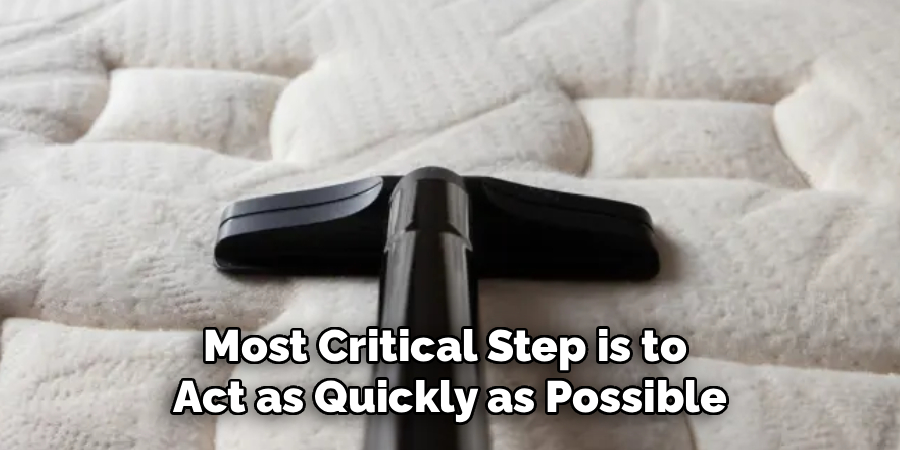
Continue this process with fresh paper towels until the area no longer transfers significant moisture. Your goal is to get the spot as dry as possible on the surface. This initial absorption is crucial because it reduces the amount of urine that the cleaning solutions will need to neutralize. Remember to wear gloves if you have them, as cat urine contains bacteria. Discard the used paper towels in a sealed bag to contain the odor. This quick response sets the stage for a more effective deep clean.
Step 2: Liberally Apply Baking Soda
Once you have blotted the area thoroughly, the next step is to use baking soda to draw out more moisture and begin neutralizing the odor. Generously sprinkle a thick layer of baking soda directly onto the affected area, ensuring it completely covers the entire stain. Baking soda is a natural deodorizer and absorbent agent that works by pulling moisture and odor particles up from within the mattress fibers. Don’t be shy with the application; you want a substantial layer to maximize its effectiveness.
Let the baking soda sit on the mattress for at least several hours, or even overnight if possible. The longer it sits, the more moisture and odor it will absorb. You will notice the baking soda may clump or change color as it works, which is a good sign that it is pulling the urine out of the mattress. This step is a powerful, non-toxic way to start breaking down the uric acid crystals that are responsible for the persistent smell of cat pee. It’s a gentle yet effective precursor to using a more powerful cleaner.
Step 3: Vacuum Up the Baking Soda
After the baking soda has had ample time to work its magic, it’s time to remove it. Use a vacuum cleaner with a hose or upholstery attachment to thoroughly suction up all the baking soda from the mattress. Go over the area several times from different angles to ensure you remove all the powder. Any residue left behind can interfere with the next cleaning steps, so be meticulous. You should notice an immediate reduction in the urine smell after completing this step.
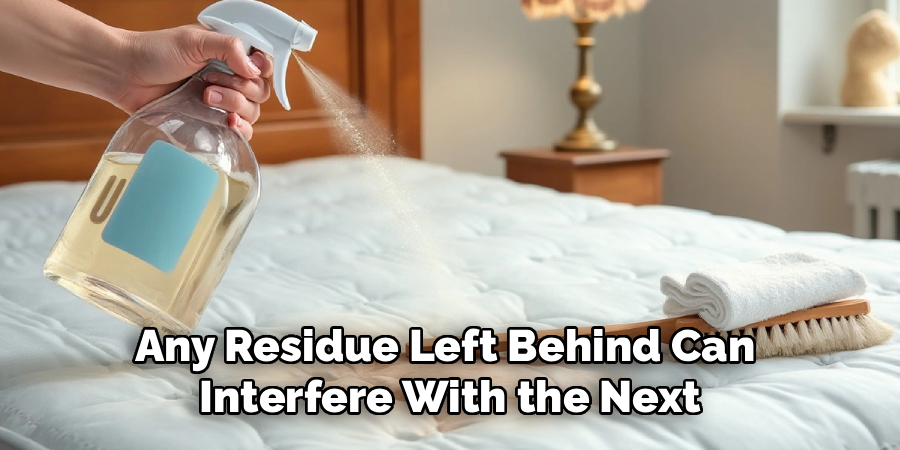
This vacuuming process not only removes the baking soda but also the absorbed urine and odor particles along with it. It prepares the mattress surface for the application of an enzymatic cleaner, which will tackle the remaining uric acid crystals at a molecular level. Make sure your vacuum filter is clean before you start to ensure maximum suction power. A thorough vacuuming job is essential for creating a clean slate for the deep-cleaning treatment that follows.
Step 4: Prepare and Apply an Enzymatic Cleaner
Now it’s time to bring in the most powerful tool for this job: an enzymatic cleaner. These cleaners are specifically formulated to break down the organic proteins and uric acid found in pet urine, effectively eliminating the odor at its source rather than just masking it. Purchase a high-quality enzymatic cleaner from a pet store or online. Avoid all-purpose cleaners, as they lack the necessary enzymes to neutralize cat urine effectively. Read the instructions on the product label carefully before you begin.
Pour the enzymatic cleaner into a spray bottle for even application, or use the sprayer it came with. Thoroughly saturate the entire affected area of the mattress. It’s crucial to use enough of the cleaner to penetrate as deeply as the urine did. The enzymes need to come into direct contact with all the urine deposits to work properly. Don’t just spray the surface; you want the cleaner to soak into the mattress padding where the urine has settled. This step is the core of the entire cleaning process, as it targets the chemical compounds that cause the persistent odor.
Step 5: Allow the Enzymatic Cleaner to Work
Patience is key in this step. Once you have applied the enzymatic cleaner, you need to give it time to do its job. The enzymes work by consuming the organic matter in the urine, a process that doesn’t happen instantly. Cover the freshly treated area with a damp, dark towel or plastic wrap. This helps keep the area moist, which is essential for the enzymes to remain active and continue breaking down the uric acid. A dry environment will deactivate the enzymes, halting the cleaning process.
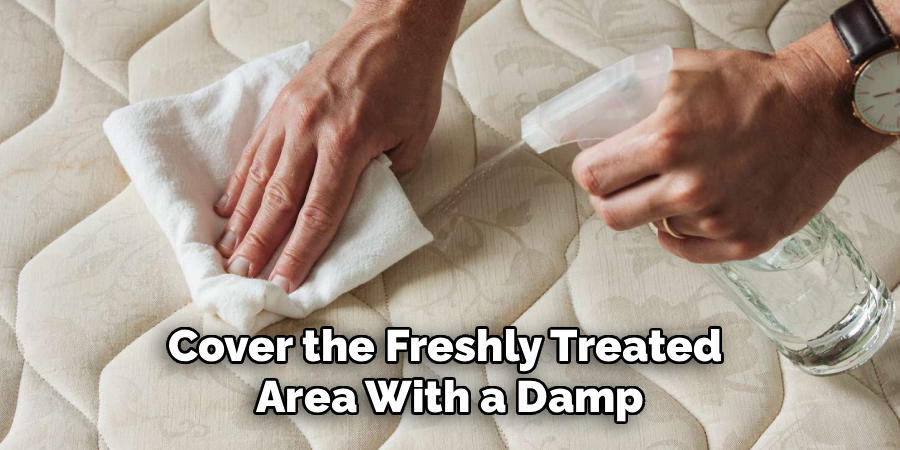
Refer to the product’s instructions for the recommended dwell time, which is typically several hours. However, for a severe or set-in stain on a mattress, it is often best to let the cleaner work for at least 12 to 24 hours. Placing a dark towel over the area also serves another purpose: it discourages your cat from returning to the spot while it is being treated. Resist the urge to speed up the process by applying heat or trying to dry the area quickly, as this will prevent the enzymes from working effectively.
Step 6: Blot and Dry the Area Again
After the enzymatic cleaner has had sufficient time to work, you’ll need to remove the excess moisture. Just as you did in the first step, use clean, dry cloths or paper towels to blot the treated area. Press down firmly to absorb as much of the cleaning solution and broken-down urine as possible. Continue blotting with fresh towels until the area feels damp rather than wet. This removes the residue and helps speed up the final drying process significantly.
Once you have blotted the area thoroughly, you need to let the mattress air dry completely. This can take a considerable amount of time, often 24 hours or more, depending on the humidity and air circulation in the room. To speed things up, you can open windows to increase airflow, set up a fan to blow directly on the spot, or use a dehumidifier in the room. It is absolutely essential that the mattress is 100% dry before you put any bedding on it or sleep on it, as any remaining moisture can lead to mold and mildew growth.
Step 7: Perform a Smell Test and Repeat if Necessary
Once the mattress is completely dry, it’s time for the moment of truth. Put your nose close to the area that was treated and take a good sniff. In most cases, if you followed the steps correctly, the odor should be gone. However, cat urine is incredibly persistent, and for older, deeper, or more concentrated stains, a single treatment might not be enough to completely eradicate the smell. The uric acid crystals may have penetrated very deeply into the mattress foam.
If you can still detect a faint smell of urine, do not be discouraged. You will need to repeat the cleaning process. Begin again from Step 4, reapplying the enzymatic cleaner. Ensure you are using enough of the product to saturate the area even more deeply than before. Let it sit for the recommended time, and then blot and dry the mattress again. Sometimes, two or even three applications are necessary to completely break down all the uric acid crystals and fully eliminate the odor for good.
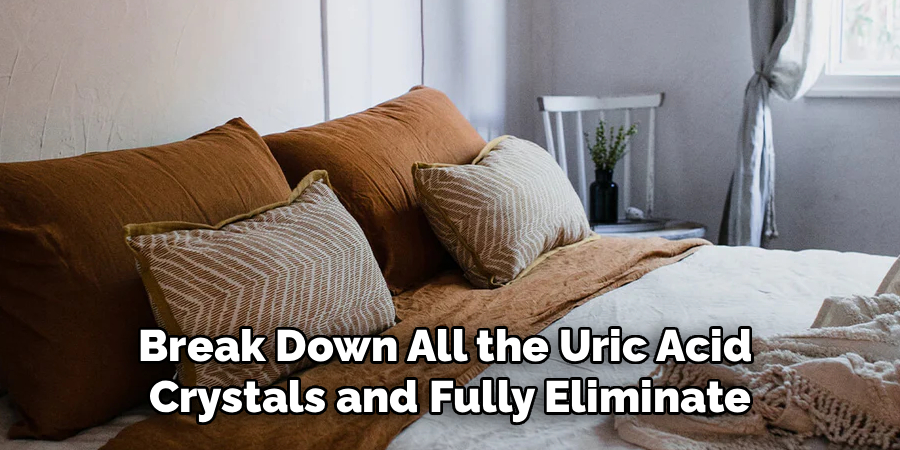
Step 8: Prevent Future Incidents
After you’ve successfully cleaned the mattress, the final step is to take measures to prevent it from happening again. First, determine why your cat urinated outside the litter box. It could be due to a medical issue like a urinary tract infection, stress, or a problem with the litter box itself (e.g., it’s not clean enough, the litter type has changed, or its location is undesirable). A trip to the vet is always a good idea to rule out any health problems.
To protect your mattress going forward, invest in a high-quality, waterproof mattress protector. This provides an impermeable barrier that will stop any future accidents from soaking into the mattress itself, making cleanup as simple as washing the protector. You can also use pet-repellent sprays on or around the bed to discourage your cat from returning to that spot. Addressing the root cause of the behavior and protecting your bed are the best ways to ensure you won’t have to go through this intensive cleaning process again.
Following these steps on how to get cat pee out of mattress without vinegar will not only help you remove the unpleasant odor and stain, but also prevent any future accidents from occurring. It’s important to remember that cats are creatures of habit and may continue to return to the same spot if they can still detect their scent.
Frequently Asked Questions
Q1: Why Is It So Hard to Get Rid of Cat Pee Smell?
A1: The smell of cat urine is notoriously difficult to eliminate because of its chemical composition. Cat urine contains uric acid, which is not water-soluble and bonds tightly to surfaces like fabric and foam. As the urine dries, the uric acid forms crystals that are left behind. These crystals are reactivated by moisture, which is why the smell can return on humid days or if the area gets damp again. Standard cleaners are not effective at breaking down these stubborn uric acid crystals, which is why specialized enzymatic cleaners are necessary to permanently remove the odor.
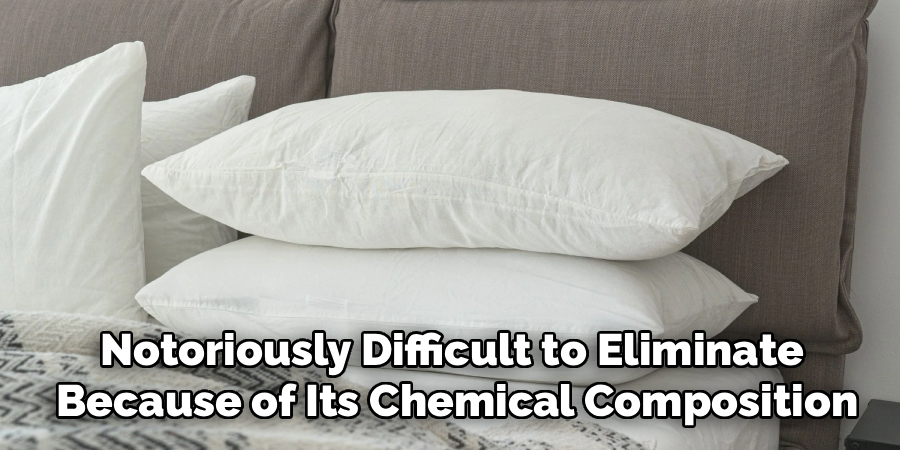
Q2: Can I Use Hydrogen Peroxide Instead of an Enzymatic Cleaner?
A2: While hydrogen peroxide can be an effective alternative for cleaning and disinfecting, it should be used with caution on mattresses. A solution of hydrogen peroxide, a small amount of dish soap, and baking soda can help break down stains and odors. However, peroxide can have a bleaching effect, potentially discoloring your mattress fabric. It is crucial to spot-test it on an inconspicuous area first. Even if it works, it may not be as effective as an enzymatic cleaner at breaking down all the uric acid, meaning the odor could return.
Q3: How Long Does It Take for a Mattress to Dry Completely?
A3: The drying time for a mattress can vary significantly based on several factors. These include how deeply the liquid penetrated, the type of mattress (memory foam takes longer to dry than innerspring), the humidity level in your home, and the amount of airflow in the room. After a deep clean, it can take anywhere from 12 to 48 hours for a mattress to dry completely. To speed up the process, use fans to circulate air over the spot, open windows, and run a dehumidifier. It is critical to ensure the mattress is 100% dry before use to prevent mold and mildew.
Q4: Will My Cat Pee on the Bed Again?
A4: There is a risk that your cat may return to the same spot, especially if any trace of the urine odor remains. Cats use scent to mark their territory, and the smell of their own urine can signal that this is an acceptable place to eliminate. This is why it is so important to use an enzymatic cleaner to completely destroy the odor molecules. Additionally, you must address the underlying reason for the behavior. Common causes include medical issues, stress, anxiety, or dissatisfaction with their litter box setup. A waterproof mattress protector is the best defense against permanent damage from future accidents.
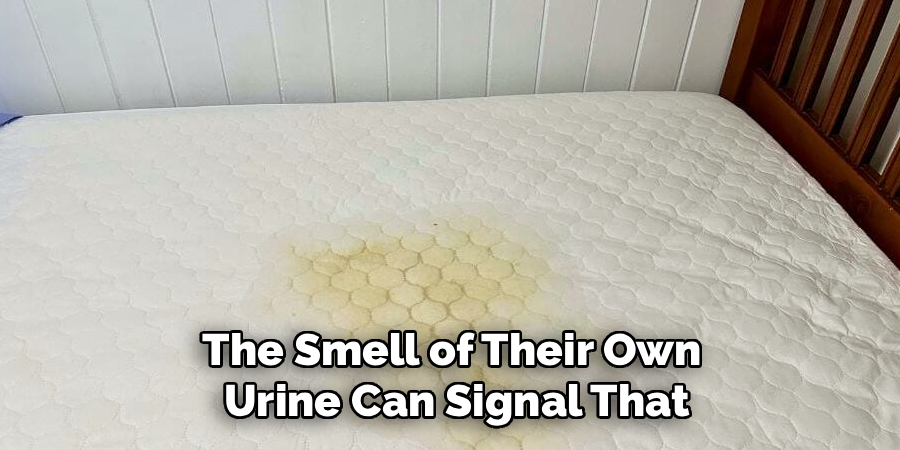
Conclusion
Dealing with cat urine on a mattress is a challenging task, but it is entirely possible to restore your bed to its former freshness without using vinegar. The key to success lies in acting quickly, using the right materials, and following a methodical process. By diligently blotting, applying baking soda, and thoroughly treating the area with a powerful enzymatic cleaner, you can break down the stubborn uric acid crystals that cause the persistent odor.
Patience is essential, as the process of allowing the cleaner to work and letting the mattress dry completely can take time. Don’t hesitate to repeat the treatment if necessary to fully eliminate any lingering smells. By following these steps on how to get cat pee out of mattress without vinegar and taking preventive measures like using a waterproof mattress protector and addressing the cause of your cat’s behavior, you can ensure your mattress remains a clean, comfortable, and odor-free place to rest.
About
Construct Fixes is a distinguished figure in the world of Diy design, with a decade of expertise creating innovative and sustainable Diy solutions.
His professional focus lies in merging traditional craftsmanship with modern manufacturing techniques,
fostering designs that are both practical and environmentally conscious. As the author of diy,
constructfixes delves into the art and science of construction-making, inspiring artisans and industry professionals alike.
Education RMIT University
(Melbourne, Australia) Associate Degree in Design (Construct Fixes) Focus on sustainable design, industry-driven projects,
and practical craftsmanship. Gained hands-on experience with traditional and digital manufacturing tools, such as CAD and CNC software.
Nottingham Trent University
(United Kingdom) Bachelor’s in constructfixes.com and Product Design (Honors) Specialized in product design with a focus on blending creativity with production
techniques. Participated in industry projects, working with companies like John Lewis and Vitsoe to gain real-world insights.
Publications and Impact
In diy, Construct Fixes his insights on indoor design processes, materials, and strategies for efficient production.
His writing bridges the gap between artisan knowledge and modern industry needs, making it a must-read for both budding designers and seasoned professionals.
